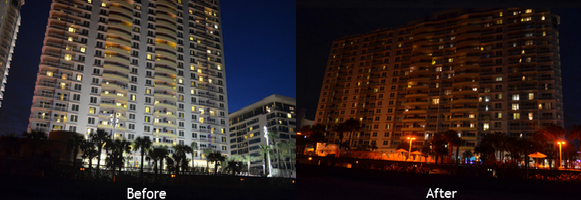Apologies for the bout of quietness, what a busy June and July it has been indeed! Where to start? What are we doing? How are all the Islands fairing and how are we set compared to previous years? Well let us have a look shall we!
Firstly I would like to welcome my trusty partner in crime Jen Swiggs back to the team. Jen interned with us last year and we didn’t seem to put her off so she has come to join us for another season of fun in the sun! Our full team this season also includes Jack Boyle and Bryce Gunning all of whom have in some form or another worked with us previously on the DoE’s turtle program. It’s awesome to have them back and finally the turtle intern team is complete! This season is on target to being very busy indeed! But what has been going on in the life of the turtle interns, as it has been a while since my last turtle confession!
Whoop whoop this is the sound of the police!
Two weeks ago I was woken at 4:30am by our DoE chief enforcement officer Mark Orr who informed me that there was a poaching in progress on a female turtle that was attempting to lay her nest on one of our monitored beaches. A witness had been walking the beach with his dogs when he spooked several poaches who had managed to flip the female on her back and were attempting to take her off the beach. Thankfully the presence of the dogs detoured the poachers and the police and Mark were called. Upon arrival the turtle was in good health. She weighed an estimated 400lb and measured 110cm in shell and with no identification tags she became our first turtle to be tagged in 2015. Once tagged it took 4 of us to carry her past the ironshore which she had become trapped behind to a clear walkway down to the ocean. Although she still preferred to clamber back across she did safely re-enter the water by 7am and lives to nest another day!
What’s that coming over the hill is it a monster?
It’s the second concerned citizen to call the turtle hotline this season with an enquiry on what to do when they have a ‘Giant’ turtle walking across the road or found on a building site. Said giant turtle ended up to be a 9 inch hickatee freshwater turtle which is presumed native to the Island. There is also a second freshwater turtle found here, the red-slider. Both of these species are commonly seen basking on rocks, mangrove roots, submerged tree stumps and occasionally venturing across roads and properties. Stay tuned for a following blog on how to identifying these species.

Although one take home message before calling the turtle hotline… Does the turtle have feet (with little claws) or flippers? If flippers, please call the DoE sea turtle hotline! However, if you are uncertain or have any further questions please do call the hotline on 938-NEST (938-6378).
High ho! High Ho! It’s off to work we go! With a logger over here, and a green over there! High ho! High ho!
So on to the main event, the part of the blog that you have all been waiting for the current nesting numbers! We have been very busy across Grand Cayman (GCM) and Little Cayman (LC), with 130 nests being recorded in GCM, and 92 in LC. These nesting numbers are approximately 30% higher than 2014 and are only a few nests below 2013, which was our busiest season on record. So currently nesting numbers are very promising. On the other hand, Cayman Brac (CB) has not seen as many nests compared to previous years with only 9 nests being laid compared to 28 found in 2014. This however, at the current time in the season is not overly worrying: if you can recall from our previous blogs, each year nesting numbers will fluctuate naturally as individuals will be nesting on a 2-3 year nesting interval.
So we hope that the numbers will continue to rise for all islands and with the beginning of the Darwin Project night time tagging program looming ahead of us, we should be able to update you with any new turtles being tagged. Let us see how many returnees we get this year having started our tagging program in 2013. As previously mentioned we have already tagged our first turtle for 2015 but we have also had our first returned turtle with tags. She was our 8th turtle found nesting in 2013 in a similar location and we hope to see her nesting many more times this summer.
So to round this all off for now, this season looks to be on target for being a very busy one! We still have plenty of opportunities for you to get involved this season as we hope to dedicate at least one day a week to public education be it through talks, nest excavations and hatchling releases. So if you are interested in seeing any of these then please do get in contact with us either through email: doeturtlemonitoring@gmail.com or doe@gov.ky or call us on the turtle hotline: 938 (NEST) (938-6378).
Until next time my friends!
Luc :)

































